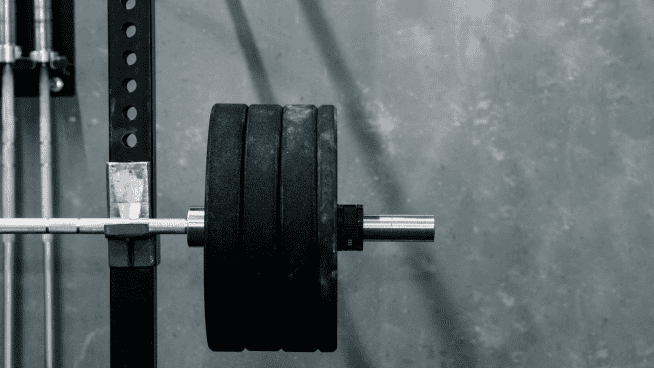Certain exercises have been classified as aerobic (with oxygen) or anaerobic (without oxygen). Typical aerobic activities include jogging, biking and any exercise that requires sustained motion for more than five minutes. Typical anaerobic activities include sprinting, jumping and any exercise that can only be sustained for a short period of time before the athlete needs to rest. Unfortunately, inaccurate use of these terms can cause athletes to avoid certain training regimens, because their event or sport seems to be clearly one or the other. To add further confusion, even world-class trainers misuse the terms.
The terms aerobic and anaerobic were coined by biochemists over 60 years ago to describe how our cells break down sugars. One part of this complicated process does require no oxygen (anaerobic) to create energy from the sugar. As a byproduct, lactic acid is produced. The aerobic part of sugar breakdown occurs inside the mitochondria (tiny structures inside our cells), and oxygen is used to help make energy. Because of our chemical makeup, our bodies can make four times more energy from sugar breakdown inside the mitochondria (aerobic) than from anaerobic sugar breakdown. However, please understand that both anaerobic and aerobic sugar breakdown are happening simultaneously within our bodies, even within the same cell! You are actually producing lactic acid as you are reading these words! Are you feeling any muscle soreness yet?
Somehow, a few coaches and fitness experts decided to classify sprinting as anaerobic and jogging as aerobic. Clearly, sprinters do not hold their breath during an event. The rationale was that the sprinter does not run long enough to use energy from his aerobic system. Furthermore, blood tests showed an increase in lactic acid. Therefore, the sprinter must be doing anaerobic activity. However, the jogger is also making lactic acid, and the sprinter is also using energy made by the mitochondria, although energy made from anaerobic sugar breakdown predominates during short-burst activities. (By the way, for activities of 25 seconds or less, the energy comes primarily not from sugar but from creatine phosphate, which is neither anaerobic nor aerobic.)
Such inaccurate labeling, applying terms that describe sugar breakdown within the cells to full-body activities, can easily cause athletes and exercise enthusiasts to train in one manner and shun another. Endurance athletes need to improve their speed, and sprinters need to improve their endurance. Furthermore, long-distant running increases the body’s mitochondria, allowing for even more energy production and improving tolerance to lactic acid build-up. Sprinters need to improve their mitochondria energy production, although not to the same extent as distance athletes, and adding some long-distance runs to their training will help with that.
Rather than using the term “anaerobic,” consider substituting the term “high-intensity training,” in which your heart rate is typically greater than 75 percent of your maximum heart rate with exercises focused on speed, power, agility and lactic acid tolerance. Instead of “aerobic,” use the term “moderate-intensity training,” in which y0ur heart rate is typically 50 to 60 percent of your maximum heart rate with exercises focused on endurance, efficient fuel utilization and improvement in muscle fatigue tolerance. Training protocols such as fartleks (a mix of sprinting and jogging), kettlebells (resistance training but sustained for several minutes), basketball and soccer “suicides” and programs like CrossFit are both anaerobic and aerobic, if you insist on using these inaccurate terms.
From the 100-meter sprinter who needs endurance for his training sessions to the soccer player who employs both jogging and full sprints on the pitch, to the long-distance swimmer, both high- and moderate-intensity training are critical to overall performance improvements. By moving away from “aerobic” and “anaerobic,” we can better understand why improved performance requires both high-intensity and moderate-intensity training.
Additional Note: Lactic acid does not cause muscle soreness. Soreness comes from muscle breakdown caused by exercise. The body quickly adapts, which is why trained athletes make plenty of lactic acid without getting sore.
RECOMMENDED FOR YOU
MOST POPULAR
Certain exercises have been classified as aerobic (with oxygen) or anaerobic (without oxygen). Typical aerobic activities include jogging, biking and any exercise that requires sustained motion for more than five minutes. Typical anaerobic activities include sprinting, jumping and any exercise that can only be sustained for a short period of time before the athlete needs to rest. Unfortunately, inaccurate use of these terms can cause athletes to avoid certain training regimens, because their event or sport seems to be clearly one or the other. To add further confusion, even world-class trainers misuse the terms.
The terms aerobic and anaerobic were coined by biochemists over 60 years ago to describe how our cells break down sugars. One part of this complicated process does require no oxygen (anaerobic) to create energy from the sugar. As a byproduct, lactic acid is produced. The aerobic part of sugar breakdown occurs inside the mitochondria (tiny structures inside our cells), and oxygen is used to help make energy. Because of our chemical makeup, our bodies can make four times more energy from sugar breakdown inside the mitochondria (aerobic) than from anaerobic sugar breakdown. However, please understand that both anaerobic and aerobic sugar breakdown are happening simultaneously within our bodies, even within the same cell! You are actually producing lactic acid as you are reading these words! Are you feeling any muscle soreness yet?
Somehow, a few coaches and fitness experts decided to classify sprinting as anaerobic and jogging as aerobic. Clearly, sprinters do not hold their breath during an event. The rationale was that the sprinter does not run long enough to use energy from his aerobic system. Furthermore, blood tests showed an increase in lactic acid. Therefore, the sprinter must be doing anaerobic activity. However, the jogger is also making lactic acid, and the sprinter is also using energy made by the mitochondria, although energy made from anaerobic sugar breakdown predominates during short-burst activities. (By the way, for activities of 25 seconds or less, the energy comes primarily not from sugar but from creatine phosphate, which is neither anaerobic nor aerobic.)
Such inaccurate labeling, applying terms that describe sugar breakdown within the cells to full-body activities, can easily cause athletes and exercise enthusiasts to train in one manner and shun another. Endurance athletes need to improve their speed, and sprinters need to improve their endurance. Furthermore, long-distant running increases the body’s mitochondria, allowing for even more energy production and improving tolerance to lactic acid build-up. Sprinters need to improve their mitochondria energy production, although not to the same extent as distance athletes, and adding some long-distance runs to their training will help with that.
Rather than using the term “anaerobic,” consider substituting the term “high-intensity training,” in which your heart rate is typically greater than 75 percent of your maximum heart rate with exercises focused on speed, power, agility and lactic acid tolerance. Instead of “aerobic,” use the term “moderate-intensity training,” in which y0ur heart rate is typically 50 to 60 percent of your maximum heart rate with exercises focused on endurance, efficient fuel utilization and improvement in muscle fatigue tolerance. Training protocols such as fartleks (a mix of sprinting and jogging), kettlebells (resistance training but sustained for several minutes), basketball and soccer “suicides” and programs like CrossFit are both anaerobic and aerobic, if you insist on using these inaccurate terms.
From the 100-meter sprinter who needs endurance for his training sessions to the soccer player who employs both jogging and full sprints on the pitch, to the long-distance swimmer, both high- and moderate-intensity training are critical to overall performance improvements. By moving away from “aerobic” and “anaerobic,” we can better understand why improved performance requires both high-intensity and moderate-intensity training.
Additional Note: Lactic acid does not cause muscle soreness. Soreness comes from muscle breakdown caused by exercise. The body quickly adapts, which is why trained athletes make plenty of lactic acid without getting sore.











